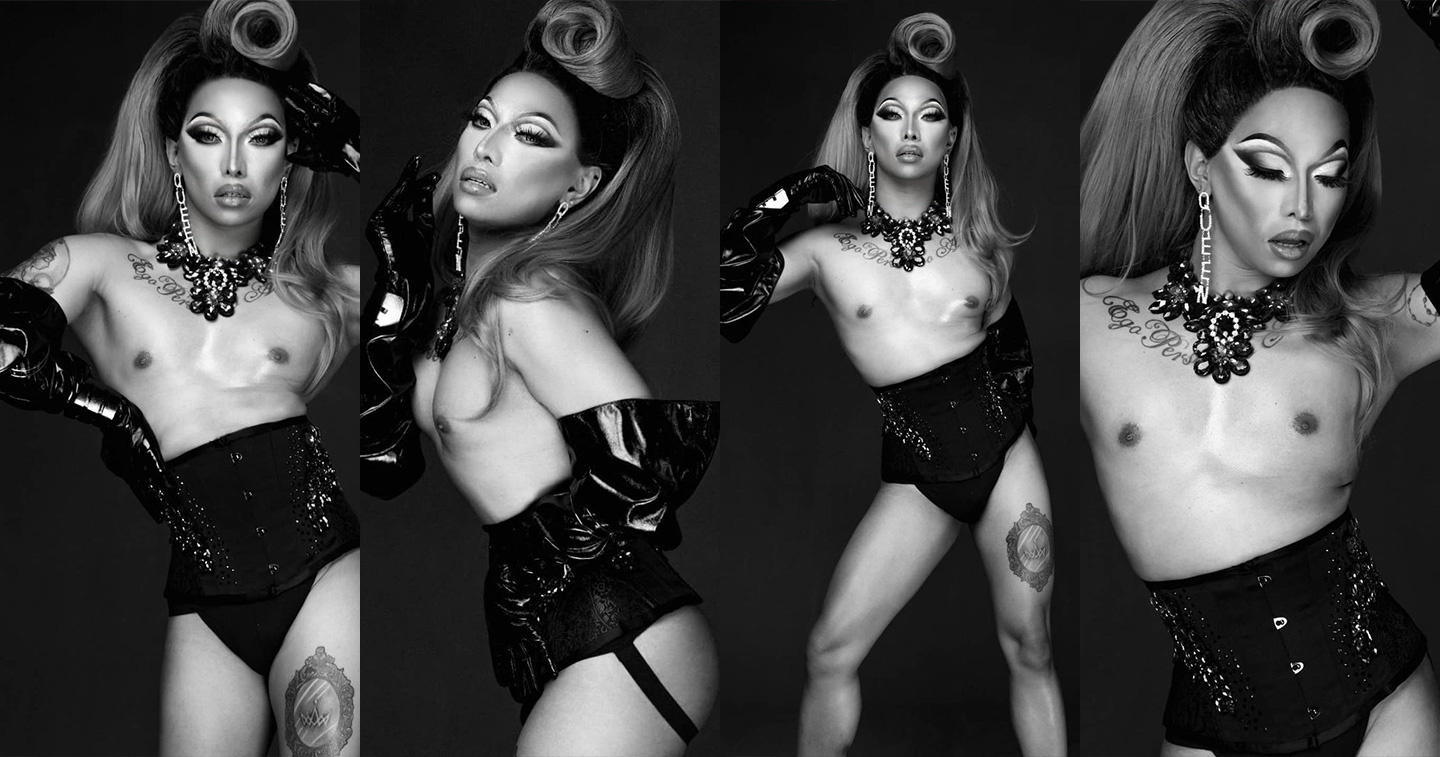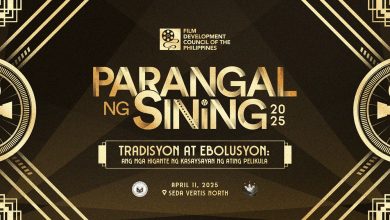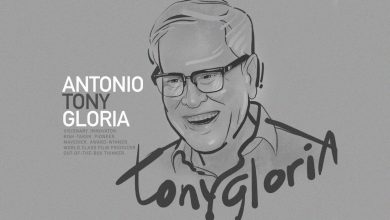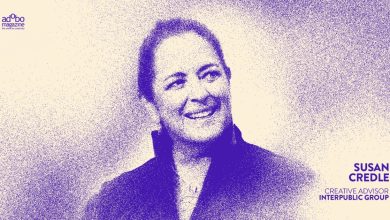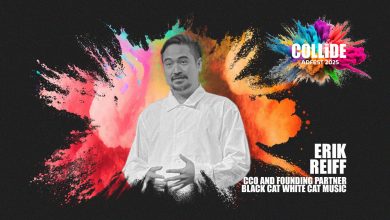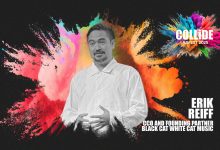MANILA, PHILIPPINES — LGBTQIA+ history and culture are not complete without drag. As an art form, it’s one that embodies subversion, plays with gender, and most importantly, is rooted in the politics and community building that can’t — and should not be erased — from LGBTQIA+ history and culture.
In the past decade, drag has become more mainstream, in huge part because of Rupaul’s Drag Race, a phenomenon that has transcended communities. And while that has been an amazing thing, it comes with the stronger need to keep in mind that drag culture and history are so much richer and more diverse than what one can find through mainstream Western programs.
In anticipation of the two exciting drag TV shows coming to the Philippines — Drag Race Philippines and Drag Den — it’s important to remember that drag has been a part of Filipino LGBTQ+ culture long before those programs were announced. So, as part of Pride Month, adobo Magazine is putting a spotlight on three exemplary local queens that show how much drag excellence there is to discover — and support — in this country.
These past couple years, the uplifting of local drag has been huge thanks to Drag Playhouse PH, which provides tons of Filipino drag content and events that give local drag performers the spotlight and opportunities they deserve. And it goes without saying that it’s also thanks to none other than Eva Le Queen, the CEO, and matriarch of Drag Playhouse PH.
“At Drag Playhouse, we were the proponents of the #KeepDragAlive movement during the pandemic and we still want to keep doing it even now,” Eva told adobo Magazine. “We are expanding it to bring drag to more people [through things like] drag branches, drag merienda, etcetera. It would really help queens when we are actually given more choices other than the clubs and the viewing parties. So that wehen when Drag Race Philippines and Drag Den come out, [new drag fans and enthusiasts] know that there’s drag in real life other than just the reality show.”
While Drag Playhouse started during the pandemic, Eva Le Queen has been doing drag for longer than that.
Eva lived in Singapore for eight years, and that was where she started to explore drag when she and her friends would spend long weekends playing Gay Lotto, where they’d put on makeup and make garments out of blankets and curtains for fun before it grew into a regular tradition and they started having clothes made for it. “It just turned into this yearly thing,” she recalled. “I think that was a precursor to my drag — the beauty pageant era”
Eva talked about how she then went on to join an amateur drag competition in one of the clubs in Singapore. “I joined [with] zero experience and after four months, which was the run of the show, I finished first runner up. So, [I thought to myself] ‘Ah, this must be something for me.’”
“When I saw myself transform, when I had the brush and put on my makeup, I always say that it was love at first drag,” she continued. “I just knew at that moment that this is something I could not not do again.”
And it’s a good thing that she did do it again, or else the world would never have been introduced to Eva Le Queen and all the fierceness and opulence she serves.
“Eva as a character is very queenly. Hence the name,” she explained.” When I created Eva, it was to embody my fantasy, which is the evil queens, villains, and witches. That powerful, strong, dark female energy. I really wanted to channel that into my drag persona.”
View this post on Instagram
“When you see Eva, you would always see very glamor. And sometimes it’s spooky. The makeup is always very masungit, [strong, and fierce,]” Eva continued. “The aesthetic is always very opulent. Opulence is the brand — that’s what I’m trying to achieve. Doon ko nafefeel yung fantasy ko.”
It took a while — and tons of experimentation and exploration — for her to really decide on that branding for Eva Le Queen. “I’ve been doing drag for almost five years now,” she said. My first two years [were very] experimental. I [was] not very conscious of my brand yet. What I just really wanted to do was just express who I am. I was very experimental when I was much younger.”
By 2019, she was back in the Philippines and became a performer and drag hostess at Nectar bar, quickly being a vital part of the rich Filipino drag scene and the astounding talent in it.
“As a performer, when I am on stage, I am more of a storyteller. There are different kinds of performance in drag — there are lip-syncers, there are stunts, there are dancers,” she said. “What I do is storytelling. I lip-sync to a song and try to weave a different angle or perspective of that song and try to interpret it through my lip-sync.”
“I did ‘Dangerous Woman’ by Ariana Grande but I was wearing a toilet seat and that is to give you the Gretchen Diez issue,” she offered as an example. “I’m not a political queen. I’m just a queen who likes to tell stories the way I see them and share them with the world.”
“It’s highly conceptual and also very camp. Recently, I’ve been leaning towards comedy camp to loosen things up,” she continued. “At the end of the day, for you to connect to audiences, you have to meet them at the entertainment level.”
When asked about her creative process when creating these high-concept performances, she said she always listens to the songs first instead of coming up with the concept already. Once she listens to the lyrics, she can then come up with all these unexpected perspectives that she can make a storytelling lip-sync performance out of. “
“I think it’s just really the way my brain works,” she said. “For example, recently, I’ve been doing Stone Cold by Demi Lovato. And I was thinking this is a good [song to show the] perspective of [Frozen’s] Elsa if she was actually in love with Anna’s boyfriend.”
Eva emphasized that this level of craft isn’t just something that she does — it defines the Filipino drag scene. Everywhere you look in the local industry is a drag queen who’s ready to serve you more than just stunts and looks. They’re here to bring out a whole production.
“The thing about Filipino drag [is that it’s] heavily reliant on the entertainment value of the drag artist. Kaya grabe yung talent, grabe yung effort, grabe yung production value.
The sheer talent of Filipinos and Filipino drag artists, world-class siya talaga, sobrang galing,” she gushed. “So, if you’ve been to O Bar [or] Nectar, [you know that ] it’s not just a lip-sync [with a] reveal here and there. It’s a full-on show. It’s a whole production.”
“And to think that Filipino drag queens do not exactly have the same financial economic status as our Western counterparts. Drag doesn’t really pay very well. It’s underpaid. It’s exploited, to say the least,” she added. “So, with all the talent and fewer resources, I don’t know how these queens really make it. It’s just amazing. They’re just really amazing.”
With the deserved admiration she has for her fellow queens and her belief that they deserve more — both in terms of compensation and opportunities — it’s no surprise that she’s super excited for upcoming shows Drag Race Philippines and Drag Den.
“For the longest time, that has always been the dream — to have our own franchise of Drag Race or have our own reality show that showcases local drag para maiba yung perspective ng tao [and for] drag queens and artists to have the respect that they deserve,” she expressed. “I’m also excited for what’s going to happen for drag. It will definitely catapult the local drag scene to heights that it has never reached before.”
Eva also touched on how the upcoming shows will probably not just make drag more well-known, but it will also expand the ways people get to explore and discover a drag. Which, she pointed out, is good both for viewers — particularly young viewers who are part of the LGBTQIA+ community – and the queens themselves.
“Before, you can only see a drag queen inside the club. Kung hindi ka magpupuyat until 1:00 am or hindi ka iinom at papasok sa bar, hindi ka makakakita ng drag queen,” she said. “So, it’s just really amazing to be able to bring drag closer to more people, especially to young LGBT kids na hindi makakapasok ng clubs.”
“And drag queens would have more options. They would have choices on how to navigate their drag careers,” she added, referring to how queens will have more options outside bars and clubs if the show’s popularity were to add to the expansion of where you can find drag now. “They can take control.”
View this post on Instagram
But, of course, Eva also has her worries that come with the anticipation of the upcoming shows.
“Siyempre, nakakatakot pa rin,” she said. “I’m just really scared for our local queens [who might be] put up against Drag Race or global drag standards.”
“And come to think of it, Drag Den and Drag Race Philippines were shooting in the pandemic. [By that time,] it’s been two years [since] the clubs closed. If the [casted queens] were able to pull off what they were able to pull off on those shows at that moment, that is already a feat on its own. It’s just not fair if they will be pitted against our Western counterparts.”
Eva shared that she’s also scared of how the queens will be portrayed on the show, worrying that they will be shown as something to laugh at or that their craft will be belittled. “I really hope that the producers of [the shows] would actually be more respectful and very careful of how they present drag to people, especially those who do not understand what the drag is.”
With that said, Eva remains hopeful for what these shows can do for the local drag scene “I’m optimistic na walang talo, whether you’re on the show, [or not] as long as drag is introduced in such a way that people would want to engage drag queens and have drag present in more avenues like fashion and TV.”
When asked how they would feel about that reset maybe involving people — including cishet people — who want to try drag because of the TV franchises, she answered, “We don’t want to gatekeep the art of drag. We want to share it with everyone.”
“But I think it all boils down to your intention and why you do what you do,” she clarified. As an example, she recalled the time she appeared on Pinoy Big Brother as a Fairy Drag Mother to teach the housemates – all of which were straight cisgender people save for one trans woman — how to walk the runway in heels. “What I was trying to tell them is that you should treat it respectfully.”
“It’s just the acknowledgment that all over the world, hundreds and thousands of young gay kids are being discriminated, bullied, or harassed for merely expressing who they are. And yet, here you are on a platform like this, and you get to wear a wig, you get to walk in heels, and you’re applauded,” she expounded. “[We need that] mere acknowledgment of the injustice in this world now, where if you are not part of the LGBTQ+ community and you try drag, people would glorify you [while] people who do it on a daily basis sometimes even get killed.”
“I really hope that those who try to share the culture of drag would have this realization of the privilege that they have and this beautiful culture that we want to share with them.”
She also stressed the importance of getting the same respect from drag fans — both cishet and those part of the LGBTQIA+ community — who come to shows, starting with the best way to support your local queens: tipping.
“Tipping is the currency of love and respect in drag shows. To share your love and respect through tips is very much appreciated. These queens are really underpaid and they have dues to pay. So, it would really help a lot.”
“Second, always ask permission. You would do that with any person. You wouldn’t touch someone’s hair, touch someone’s breasts, or grope someone without consent. Same applies to drag queens. These are human beings behind the makeup,” she pointed out. “We want [the audience to have fun. So, we don’t police as much as we can. But [there are basic] ‘etiquettes.’ But it’s not even actually etiquette. It’s just the basics [of how you should treat] a human being.”
Like Eva said, it’s not hard to support and respect your local queens. And hopefully, the Philippines is going to see a rise in people doing so with new drag shows potentially becoming a catalyst for more opportunities for gigs, for representation, and for local drag to be the best that it can be.
It’s a change that is more than welcome — and it’s a change that hopefully transcends the drag that people will see on their TV screens.
“It’s high time for us to elevate the drag scene here in the Philippines,” she said. “If we don’t push for a more elevated view or perspective of local drag, hindi tayo magkakaroon ng opportunities. Hopefully, [the upcoming rise in popularity] will be able to bring the beauty of drag outside the TV show so that it will be a cultural reset in the community.”

